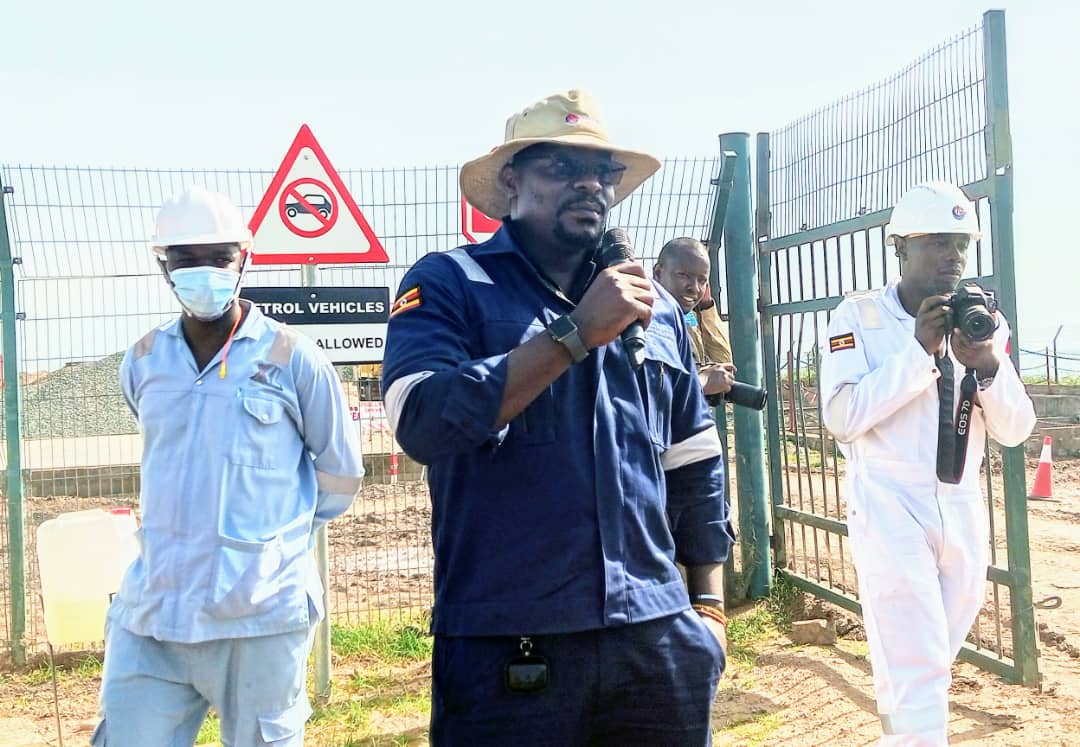
KAMPALA – As environmental activists continue to wage war on social media against the East African Crude Oil Pipeline (EACOP) project with the popular ‘#StopEACOP’ phrase, China National Offshore Oil Corporation (CNOOC) a contracted operator of the Kingfisher project noted that an environmental assessment has been carried out by National Environmental Management Authority (NEMA), and several frameworks have been put in place to facilitate the monitoring and management of environmental and social aspects arising from oil and gas activities.
One of the measures is the Strategic Environmental Assessment (SEA) of the oil and gas activities in the Albertine Graben which was undertaken between 2010 and 2013 and approved by Cabinet in July 2015. In addition to this is the National Oil Spill Contingency Plan that was lauched this year (2022).
Andrew Otuba, the Senior Field Environmental Officer at CNOOC said an Environmental and Social Impact Assessment was carried out at Kingfisher with support from NEMA, based on international standards. He noted that the priority of environmental management is always to minimize adverse impacts and enhance the desirable impacts.
Otuba emphasized that to ensure that there is no leak, the pipeline is designed with a sufficient wall thickness, and that it will be buried to avoid external interference. “It will be laid with a fiber optical cable that will detect any leakage or intrusion in the right of way of the pipeline,” he added.
Despite all these and many more measures, however, environmental activists continue to bash the EACOP project.
One of the platforms designed for environmental activists dubbed ‘Stop EACOP’ posted on Twitter saying, “…It is becoming apparent that this pipeline is an environmental headache, an economic nightmare and cancer that needs to be stopped.#Stop EACOP.”
In response to all these anti-EACOP social media posts, the Government of Uganda through it’s Twitter handle said no amount of propaganda can stop the project from progressing because Africa which is responsible for less than 6% of greenhouse gas pollution needs to use its resources to develop just like other countries.
In unison, Ali Ssekatawa, the Director for Legal and Corporate Affairs at the Petroleum Authority of Uganda (PAU) also posted on Twitter saying, “The EACOP has the full backing of the 300 million people of East Africa. From the industrial revolution, Africa is not the polluter. The largest pipeline network is laid under European/American and Canadian land/sea bed.”
Dr. Joseph Kobusheshe, Director Environment, Health, Safety and Security at Petroleum Authority of Uganda in his opinion article on the “Environment Issues in Oil and Gas” series noted that protests against the East African Crude Oil Pipeline (EACOP) Project do not hold water.
He pointed out that according to the United States Environment Protection Agency, the United States and European Union bloc (including the United Kingdom that exited the bloc in 2020), which constitute about 10% of world’s population, were responsible for about a quarter (25%) of the global CO2 emissions from fossil fuels and industrial processes in 2014.
“Ironically, the international environmental activists and media making the most “noise” about stopping Uganda’s oil projects are from these countries,” he added.
As all this goes on, CNOOC is successfully executing its duties in Kingfisher as earth and drainage works progress to ready the project for the 2025 first oil.
The Kingfisher Development Area (KFDA) covers the Kingfisher field located in Kikuube District with plans for future tie-in of Mputa-Nzizi-Waraga fields in Kaiso-Tonya, Hoima District. The project includes the following facilities:
I) Development of a Central Processing Facility (CPF) with a capacity of 40,000 barrels of oil per day.
Ii) Thirty-one (31) wells (11 injectors and 20 producers) to be drilled on four (4) well pads.
iii) Nineteen (19) kilometres of flow-lines to connect the fields to the CPF.
iv) A forty-six (46) kilometer 12-inch feeder pipeline from the CPF in Buhuka to the export hub and Refinery in Kabaale, Hoima District.





